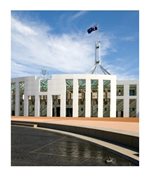Federal Budget - October 2022
 The recently elected Treasurer Dr Jim Chalmers has handed down Labor's first Federal Budget for this term. If you're feeling like this isn't the right time of year for a Budget, you're not mistaken. The former Coalition Government had already presented the Budget for the 2022-23 financial year prior to its defeat at the Federal Election. This interim special Budget is intended to set the priorities of the new Government and serves as a response to ongoing volatility in both the domestic and global economies.
The recently elected Treasurer Dr Jim Chalmers has handed down Labor's first Federal Budget for this term. If you're feeling like this isn't the right time of year for a Budget, you're not mistaken. The former Coalition Government had already presented the Budget for the 2022-23 financial year prior to its defeat at the Federal Election. This interim special Budget is intended to set the priorities of the new Government and serves as a response to ongoing volatility in both the domestic and global economies.
Budget night, and the day following, is ordinarily a busy time for us as we digest a raft of tax measures and announcements affecting small-medium business. This Budget however is almost entirely devoid of any initiatives that may directly impact business, either positively or negatively. This may be seen on the one hand as a relief, as both superannuation and taxation are left largely untouched (beyond previously announced measures), however it also does little to assist with cost of living and other challenges faced by people in business in the current environment.
For what it's worth, here's a few of the more notable highlights.
Although announced prior to the Budget, the Budget confirms that electric cars purchased after 1st July 2022 for less than $84,916 will be exempt from Fringe Benefits Tax (FBT) and import duty of 5%. This presents an opportunity for significant savings through salary packaging arrangements for employees, although it's worth noting that any vehicle packaged in this way still forms part of an employee's Reportable Benefits, which may impact things like Family Benefits and Medicare Levy Surcharge.
Funds will be made available in the form of grants to assist SMEs to reduce energy use and improve energy efficiency. The precise form of these grants and the initiatives that will be made available are yet to be announced.
Despite anticipated challenges on the revenue side of future Budgets, the Budget was silent on the personal income tax cuts legislated by the previous Coalition Government, which suggests they will go ahead as planned. The flagship component of these cuts is the abolition of the 32.5% and 37% marginal tax rates, to be replaced by a single 30% rate for taxable income over $45,000, all the way up to $200,000. Given the economic outlook however, it's almost certain that these cuts will need to be funded in other ways, including...
A number of Tax Office compliance programs were extended or allocated additional funding, including the Personal Income Tax Compliance program, and the Shadow Economy program, which is particularly focussed on the activities of SMEs. Such programs have received additional support in successive Budgets for some time, which indicates that there is likely to be a significant return on any investment.
Another previously announced measure was confirmed, this one being the reduction in eligibility age for the Superannuation downsizer contribution. This measure allows those who sell a home that they have owned for 10 years or more to make an additional non-concessional contribution to superannuation of up to $300,000. The new eligibility age of 55 years will take effect from the first quarter after the enacting legislation receives assent.
A previous announcement from 2018-19 that would allow for Self-Managed Superannuation Funds to audit on a three-year cycle rather than annually has been officially abandoned, which is unsurprising given that nothing further happened in the years following the announcement.
From 1st July 2023, the Government's Paid Parental Leave scheme will be extended so that either parent can claim it. Following this, from 1st July 2024, the scheme will be extended by two additional weeks per year, until it reaches 26 weeks per year from 1st July 2026. Coupled with increased funding for childcare, these measures will not only help more women return to the workforce, but by supporting families in general, will also provide more skilled labour sooner to the many industries experiencing dire shortages in personnel.
Given that this is an interim Budget delivered in the first year of a first term Government, some latitude may be allowed for a lack of vision and tax reform. It's clear that the Government has tried to avoid any big ticket 'cash splash' type items for households and businesses, no doubt in an effort not to work against the Reserve Bank's anti-inflation measures (for a case study in how not to do it, refer the UK’s recently abandoned Budget). The major spending initiatives are very much in the Labor 'wheelhouse' and while their effectiveness remains to be seen, we suspect that much more will be needed in future Budgets to support those in business facing increasingly hostile economic headwinds.
 Download PDF Newsletter
Download PDF Newsletter